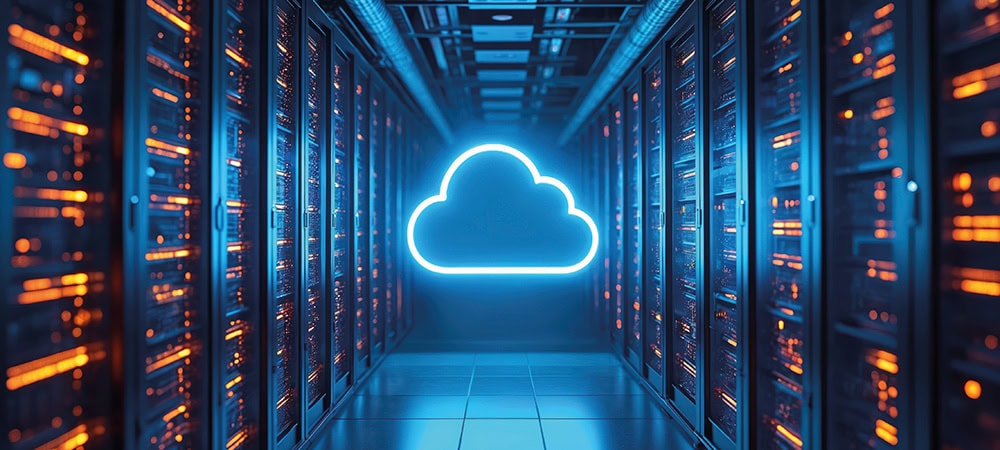Composable and hybrid


How the S/4 migration becomes a success
Support for SAP Business Suite ends as early as 2027, and all options to pay extra for extended maintenance expire in 2030. Given the complexity of the migration, these deadlines are tight. Add to this the shortage of skilled workers, and it becomes clear that waiting to make decisions is an extremely risky strategy.
But creating a new business advantage, you could call it business transformation, requires something more. Because if you only modernize, this is equivalent to maintenance. The following two best practices highlight strategic benefits that come from S/4 Hana migration: Composable ERP and Cloud Migration/Hybrid IT. New services from Fujitsu help to demonstrate a fast and reliable use of these benefits.
Composable ERP
A strategic advantage of migration is the ability to network an enterprise in a way that makes it more adaptive. According to a Gartner analysis, many vendors have multiple systems in place - SAP, Salesforce, Oracle, ServiceNow, AWS and Microsoft. The term Composable ERP describes this trend. Composable ERP uses the components you want in each case to add value - and it does so by mixing and matching different vendors. The S/4 migration is the perfect time to look at how to modernize the data infrastructure to create a kind of "control tower" environment. Thanks to this, fully networked real-time data is generated that provides a holistic overview of the company across all upstream and downstream supply chains.
Migration and Hybrid Cloud
One factor that makes S/4 even more connectable is that it is the first version of ERP that is truly cloud-native. This feature opens up all the benefits of cloud migration and the ultimate flexibility in the placement of SAP workloads. S/4 migration must therefore enable the exploitation of all the strategic advantages of hybrid cloud environments.
However, workloads in hybrid environments are very complex. Workload needs can span a variety of environments, including multiple on-premise locations as well as cloud partners with their respective regional hubs. Optimizing SAP infrastructure in these environments requires a high level of understanding.
To assist, Fujitsu offers a new Hybrid Cloud Assessment Service for SAP solutions that analyzes millions of possible placement options based on measured workloads. Fujitsu BestPlace offers a unique data-driven approach that encodes measured SAP IT as DNA and simulates a mini-evolution with genetic algorithms. Following the principle of "Survival of the Fittest", the process leads to an optimal design for a hybrid infrastructure.
This is an individualized approach that addresses the specific needs of each customer rather than following a generic model. The algorithm measures on-premise SAP operations over a period of about four weeks, compares all different placement options with the customer's IT strategy and business professionals, and provides a cost comparison for all measured SAP instance workloads in the cloud or on-premise. To ensure neutral results, this algorithm was developed externally.

At the NetApp Summit held in Vienna in September of this year, the Rohan de Souza, Head of SAP Business, European Platform Business at Fujitsu, a guest speaker on S/4 Hana, digitization, conversion and data management. The path to the cloud can bring benefits for existing SAP customers, but also many challenges, so support from partners is needed. The NetApp Summit in Vienna was designed by Fujitsu, Amazon, Cisco and Red Hat.
Value creation with rightsizing
Effective ERP should enable companies to access insights quickly, make quick decisions, and realize the value of realignment as soon as possible. Typical complaints from users address lack of speed and operational errors. To optimize workload placement here, infrastructure sizing, provisioning and maintenance must also be evaluated. SAP performance and service-level issues can have multiple causes, and finding the optimal configuration has always been a challenge. A common approach to forcing a solution: buying and installing more infrastructure, regardless of whether it fixes the root cause. However, this is an expensive solution.
Those migrating now can benefit from optimizing SAP implementations. New solutions can use real data from your landscape to create a data-driven decision-making tool for any migration or hardware upgrade. Such analysis and consulting packages address all these parameters and avoid additional expenses later on.
Solutions such as Fujitsu's System Inspection service provide clear recommendations for improving on-premises or cloud IT for SAP landscapes by identifying bottlenecks, performance anomalies and realistic capacity requirements. Rightsizing the new S/4 for on-premises reduces the cost gap between on-premises and cloud, as users do not have to buy as much excess capacity, which mostly remains unused.
Consumption-based pricing
In terms of infrastructure options, Fujitsu Primeflex for SAP Hana enables the full potential of Hana in-memory computing. It is a pre-tested infrastructure solution that is 100 percent SAP certified and designed for in-memory architecture. It exploits the full capabilities of storage without provisioning and configuration risks, and simplifies operations and maintenance with one service partner for the entire solution stack, with Availability as a Service via Fujitsu uScale.
With as-a-service models, companies can bring their infrastructure up to date and adapt it to constantly changing requirements. This simplifies the use of technology, increases agility and reduces costs. Fujitsu uScale offers a flexible on-premises IT infrastructure-as-a-service solution based on actual usage, supports business resilience, increases financial and technical flexibility. uScale is also ideal for cloud transformation projects of SAP environments. Resulting from the partnership between Fujitsu and Equinix, a complete hybrid cloud connectivity solution is offered, including access to global business ecosystems on the Equinix platform. This includes initial consulting to identify the optimal hybrid approach to support and implement SAP-driven digital transformation.
Together, Fujitsu and Equinix are working to develop innovative, differentiated solutions for use in different industries. For example, a hyperscaler-like environment is created with this capability, positioned next to the hyperscaler, providing a direct connection to all your data and applications in the cloud.







